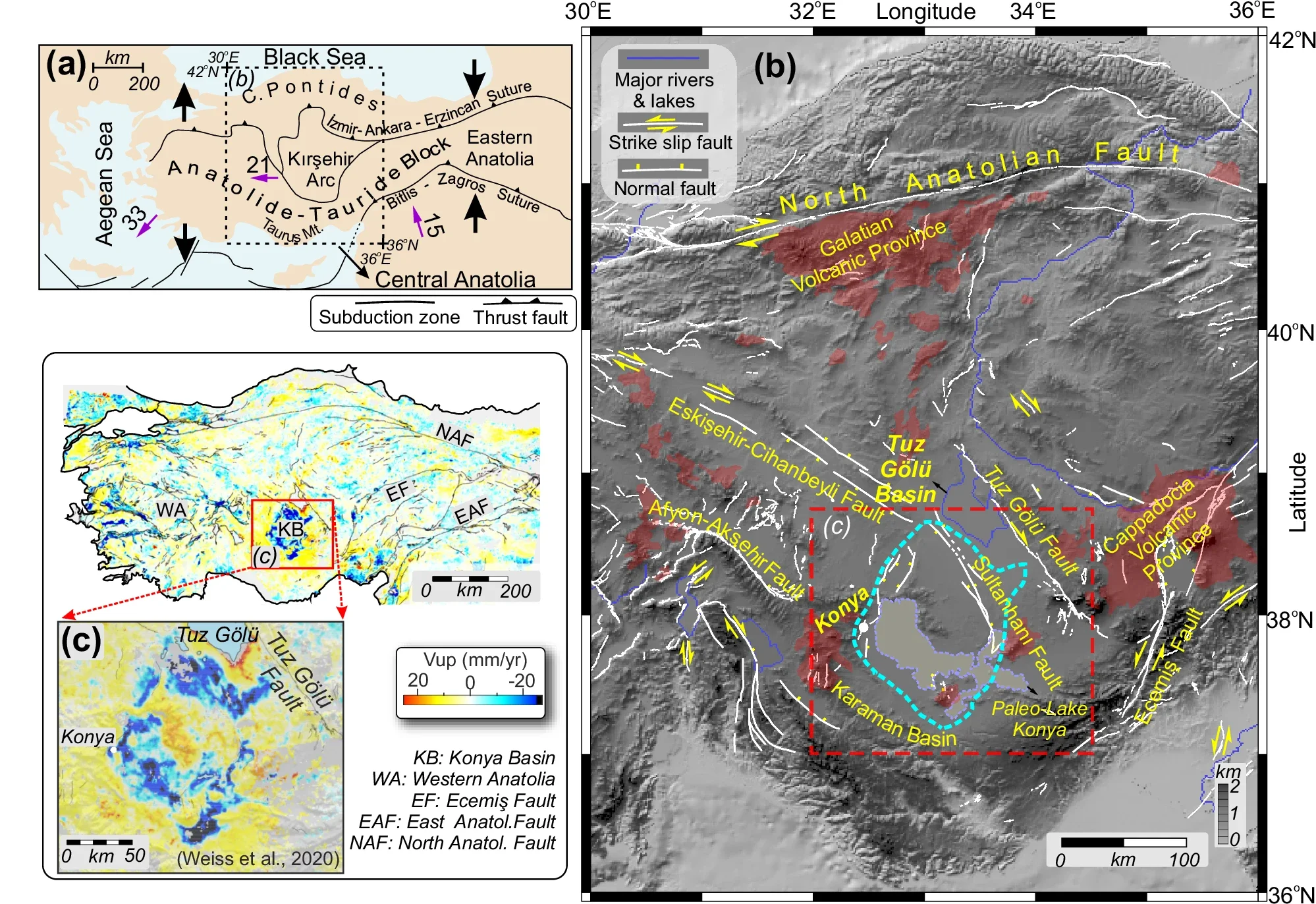The Central Anatolian Plateau, with its sweeping landscapes of high mountains and low-relief interiors, has puzzled scientists for decades.
Rising nearly 2 kilometers above sea level, this vast region’s complex geological history offers a window into the dynamic forces shaping Earth’s surface. The plateau’s northern and southern edges, known as the Pontides and Taurides, exhibit dramatic elevation changes, while the interior tells a subtler story of uplift and subsidence.
Recent research, published in the journal, Nature Communications, has shed light on a particularly enigmatic feature: the Konya Basin. Nestled within the plateau, this circular depression defies the region’s broader trend of uplift.
Using advanced satellite technology, laboratory experiments, and geological analysis, scientists have uncovered the underlying mechanisms driving this anomaly, offering insights into tectonic processes that may extend beyond Earth.
The Konya Basin’s history is tied to millions of years of geological evolution. Initially formed as a fore-arc basin during orogenic events between the Late Cretaceous and Miocene epochs, it has since become a repository of sediment. Unlike other basins with external drainage, the Konya Basin’s closed nature preserved a rich sedimentary record, including layers from an ancient lake that persisted until the Pleistocene era.

Recent satellite measurements, such as Sentinel-1 InSAR and GNSS data, reveal that the basin is actively subsiding at rates exceeding 20 millimeters per year. This rapid sinking contrasts sharply with the plateau’s overall uplift, which has raised the region by as much as 1 kilometer over the past 10 million years.
Julia Andersen, a PhD candidate and lead author of a groundbreaking study, describes the basin’s behavior as a “circular feature where the crust is subsiding,” a phenomenon linked to deep-seated geological forces.
The key to understanding the Konya Basin lies beneath the surface. Researchers identified a seismic anomaly in the upper mantle beneath the basin, indicating the presence of dense, high-velocity material. This observation, combined with a thickened crust, points to a process known as lithospheric dripping.
Lithospheric dripping occurs when dense fragments of Earth’s crust and upper mantle detach and sink into the more fluid lower mantle. This descent creates localized surface deformation, including basins and uplifts.
Related Stories
Laboratory experiments mimicking this process used silicone polymers to simulate the mantle and clay mixtures to replicate the lithosphere. By initiating a drip with a high-density seed, researchers observed the formation of a basin as the crust subsided without significant horizontal deformation.
“Within 10 hours, we observed a primary drip,” Andersen explains. “This was followed by a secondary drip after 50 hours, which pulled the crust downward to create a basin.” These findings suggest that lithospheric dripping is not a one-time event. Instead, primary drips can trigger subsequent daughter drips, each contributing to the region’s geological evolution.
The Central Anatolian Plateau is not alone in experiencing such processes. Similar phenomena have been observed in other high plateaus, such as Tibet and the Altiplano-Puna region. These areas share a commonality: their evolution involves interactions between plate tectonics and mantle dynamics. However, the Konya Basin’s behavior challenges conventional tectonic theories.
Unlike the plateau’s edges, which are shaped by active plate boundaries, Central Anatolia’s interior is tectonically quiet. There are no major fault systems, apart from the Tuz Gölü fault, which shows limited seismic activity. Despite this, the Konya Basin continues to sink, driven by deep mantle processes rather than surface tectonics.

Professor Russell Pysklywec, a co-author of the study, notes that this discovery “reveals that major tectonic events are linked, with one lithospheric drip potentially triggering further activity.” This cascading effect underscores the interconnectedness of Earth’s geological systems, where changes in the mantle ripple through to the surface.
The implications extend beyond our planet. Andersen suggests that similar processes could occur on planets lacking Earth-like plate tectonics, such as Mars and Venus. Understanding lithospheric dripping could therefore provide clues about the geological evolution of other worlds, broadening our knowledge of planetary science.
The paradox of a subsiding basin within an uplifting plateau highlights the complexity of Earth’s dynamics. While the Central Anatolian Plateau has been rising for millions of years, the Konya Basin’s subsidence represents a localized countertrend. This duality is tied to the multistage removal of lithospheric material, with primary and secondary drips reshaping the region over time.
Geophysical studies support this interpretation. Residual topography calculations show a localized depression of up to 280 meters in the Konya Basin. Coupled with fast seismic wave anomalies, these findings confirm the presence of high-density material sinking into the mantle.
As Pysklywec explains, “The weight of the lithospheric drip initially created a basin, which later rebounded when the dense material detached and sank deeper.”
Laboratory models revealed that even secondary drips, smaller than their primary counterparts, could significantly influence surface topography. This discovery challenges previous assumptions about the scale and impact of lithospheric dripping, suggesting it plays a more prominent role in shaping orogenic plateaus than previously thought.
The Konya Basin serves as a natural laboratory for studying Earth’s interior processes. By combining advanced satellite observations with experimental simulations, researchers have uncovered a complex interplay of forces driving the region’s evolution. Their work not only unravels the mysteries of Central Anatolia but also opens new avenues for understanding tectonic processes worldwide.
As Andersen concludes, “Our findings connect plateau uplift and basin formation events, revealing how Earth’s surface responds to deep mantle dynamics.”
The study’s insights have the potential to transform our understanding of orogenic systems, offering a glimpse into the mechanisms shaping our planet—and others—over geological time scales.
Note: Materials provided above by The Brighter Side of News. Content may be edited for style and length.
Like these kind of feel good stories? Get The Brighter Side of News’ newsletter.
The post Scientists discover tectonic processes that may extend beyond Earth appeared first on The Brighter Side of News.